Soldiers of St. Patrick
How Texas became American
By the middle of the 19th century, the North American United States was already strong enough not only to declare itself as a new, ambitious and active player in the international political field, but also to attend to the expansion of its territory at the expense of its closest neighbors. Since the territory of the United States is washed by the oceans from the west and east, if it made sense to expand, then to the south. From the south to the borders of the United States sided possession of Mexico. Before 1821, these territories were part of the Spanish colony of New Spain, and after the independence of Mexico were proclaimed, they became part of a new sovereign state. However, like many other countries in Latin America, from the first years of its existence, Mexico was torn apart by political strife.
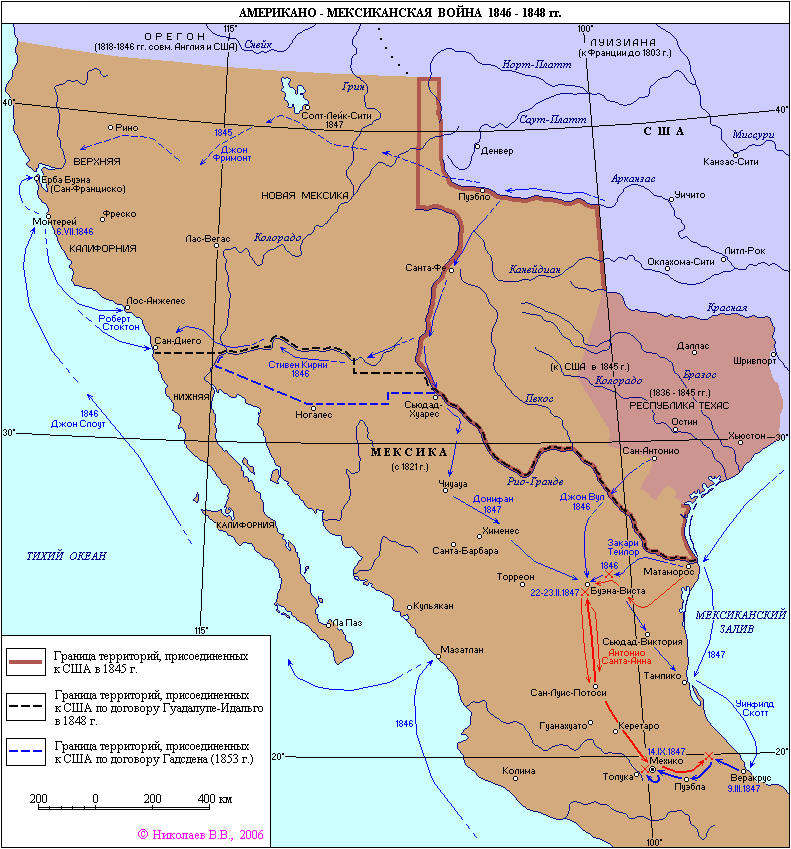
In parallel, the northern areas of the country, adjacent to the border with the United States and considered wild and undeveloped, began to be settled by American settlers. By 1830. English-speaking communities of American migrants already lived here in quite impressive numbers. Naturally, the Mexican authorities did not like this situation very much, but as the number of Anglo-American settlers grew, they began to demand more rights. In 1835, the President of Mexico, General Antonio Lopez de Santa Anna, approved in this post by the Congress of the country in 1833, began to centralize political governance in the country. Attempts by Santa Anna to establish a centralized military dictatorship did not like the elites of individual Mexican states, including the state of Coahuila-Texas, in which a significant number of American settlers lived. The latter did not like that Santa Anna insisted on the abolition of slave labor, on the basis of which the economy of resettlement farms depended, and also demanded that the Americans hand over weaponillegal immigrants - go back to the United States.
2 October 1835 began fighting between the Mexican army and the Texas militia. The latter managed to quickly get the better of the regular army of Mexico, using its weakness and low morale. Several Mexican garrisons in the state capitulated, after which 2 March 1836, English-speaking settlers declared independence of the Republic of Texas. The Mexican president, Santa Anna, responded by launching a significant military contingent into the rebellious state. At first, Mexican troops crammed Texas rebels until 21 on April 1836 of the Texas army under the command of Sam Houston failed to crush one of the Mexican formations and capture the president of Santa Anna himself. The latter, in exchange for his release, agreed to sign a peace treaty proclaiming the independence of Texas.
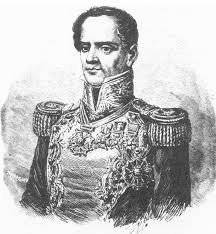 However, the Mexican government, of course, did not lose hope for the return of Texas. Although the Republic of Texas received worldwide recognition and was supported by the United States, the Mexican armed forces periodically made raids on Texas territory. The United States of America did not officially defend Texas, but for a decade volunteers were recruited in the United States to protect Texas from Mexican raids. At the same time, the United States refrained from a positive reaction to the petitions of some Texas politicians about the inclusion of the latter-day republic into the United States as 28.
However, the Mexican government, of course, did not lose hope for the return of Texas. Although the Republic of Texas received worldwide recognition and was supported by the United States, the Mexican armed forces periodically made raids on Texas territory. The United States of America did not officially defend Texas, but for a decade volunteers were recruited in the United States to protect Texas from Mexican raids. At the same time, the United States refrained from a positive reaction to the petitions of some Texas politicians about the inclusion of the latter-day republic into the United States as 28. The situation changed when James Polk was elected President of the United States in 1844. The representative of the Democratic Party, he advocated the immediate and unconditional joining of Texas and the Oregon land to the United States. Oregon land in the extreme southwestern United States also bordered on Mexico, but unlike Texas, it was never a Spanish colony or a Mexican state. The United Kingdom, France, Spain and even Russia claimed Oregon, but by the end of the 1840s. no state sovereignty over the free settlements of Oregon was absent. 13 in October 1845. The Republic of Texas adopted a new constitution and decree on accession to the United States, and 29 in December 1845 signed a resolution on the entry of Texas into the United States of America by American President James Polk.
Naturally, the decision on the accession of Texas to the United States was hostile to Mexico. The American government, realizing that an armed clash with its southern neighbor was becoming quite real, secretly began to redeploy military units to the Mexican border. The US military, under the command of General Zachary Taylor, was redeployed from Louisiana to Texas. In addition to Texas, the United States hoped, sooner or later, to get its hands on the Pacific Coast - California and New Mexico - also of considerable economic and geopolitical interest.
The beginning of the American-Mexican war
Mexico on the eve of the war with the United States was an extremely politically unstable state. Internal political strife continued, accompanied by constant changes of government and even presidents. This was well understood by the American leadership, which sought to take advantage of the weakness of the enemy and solve its tasks in acquiring new territories. 8 March 1846. American units under the command of Zachary Taylor invaded Mexico and occupied the disputed territory between the Nueces and Rio Grande rivers, which the Mexican government considered theirs and the US owned by Texas. Mexico for a long time did not dare to declare war on the States. The Americans managed to gain a foothold on the banks of the Rio Grande, before 23 on April 1846. The Mexican government nevertheless went to declare war on the United States.
It is obvious that Mexico was losing to the United States of America in terms of mobilization resources, quantity and quality of weapons. By the time the war broke out, the United States armed forces consisted of a 7 883 soldier and officer. However, during the fighting, the States put over 100 thousands of people “under the gun”, including 65 905 volunteers with a one-year service life.
The Mexican armed forces totaled 23 troops, but they were equipped with outdated weapons and poorly trained. The obvious advantage of the American armed forces was the presence of a naval fleet, which was practically absent in Mexico. It was with the help of the Navy that the Americans managed to block California ports in June-July 1846, after which the independence of the Republic of California was proclaimed on July 4, 1846, and California was annexed to the United States on August 17. Undoubtedly, the fighting spirit of the majority of American servicemen - politically free US citizens - was also stronger, while Mexican servicemen were mainly represented by Indians and dependent peons - peons. However, not everything went smoothly in the American army either. Otherwise, the St. Patrick's Battalion would not have appeared.
By the time the war with Mexico began, a significant number of servicemen recruited from among migrants served in the American army. Irish, Germans, Italians, Poles and other immigrants from European countries who arrived in the United States campaigned to join the armed forces, promising monetary rewards and even allotments of land after the end of their service. Naturally, many agreed, especially since most of the time the American army at that time was engaged in taming weakly armed Indians and did not conduct serious hostilities, unlike the European armies.
However, upon entering the American army, many emigrants faced harassment on national and religious grounds, the arrogance of the Anglo-Saxons - both officers and sergeants, and soldiers, financial deception. All this contributed to the disappointment of some visiting soldiers in the US service. The beginning of the American-Mexican war contributed to the growth of discontent among the part of the migrant servicemen who professed Catholicism and was not eager to fight with the co-religionists - the Mexican Catholics. The main part of the discontented were Irish people, of whom there were many among the migrants who arrived in the United States as a whole, and among the soldiers of the American army. Recall that in Europe, the Irish were famous for their militancy and were considered good soldiers - they were willingly used in military service by the British, French and even Spaniards.
American historians claim that the main reason for the desertion of Irish soldiers from the American army was the thirst for receiving a large monetary reward, allegedly promised by the Mexican government. In fact, although promises of money and land, of course, did take place, most Irish and other European defectors were guided more by considerations of religious solidarity. As Catholics, they did not want to fight against their co-religionists on the side of the American Protestant government, especially with the officers - the Anglo-Saxons, who belonged to the European emigres - Catholics as second-class people.
Even before the outbreak of hostilities, cases of desertion of soldiers — Irish from the ranks of the American army — became frequent. Some deserters from the first days of the war switched to the Mexican side. At least since the beginning of May, 1846 has been fighting on the side of the Mexican army by an Irish company numbering 48 men. 21 September 1846 was a artillery battery manned by American defectors in the battle of Monterrey. By the way, it was in artillery that the Irish soldiers managed to prove themselves most clearly. Since Mexico’s artillery weapons were outdated, and on top of that there was a clear lack of trained gunners, it was the Irish, many of whom served in the American artillery before switching to the Mexican side, became the most efficient artillery unit of the Mexican army.
The best mexican battalion
The battle of Monterrey showed the high fighting qualities of the Irish artillerymen, who repelled several attacks by American troops. Nevertheless, despite the prowess of the Irish, the Mexican command still capitulated. After the battle of Monterrey, the unit of the Mexican army staffed by the Irish increased in number. According to some reports, it brought together soldiers and officers to 700, but most historians agree that it numbered 300 people and consisted of two reinforced mouths.
This is how the St. Patrick's Battalion appeared, so named after a Christian saint, especially revered in Ireland and considered the patron saint of this island nation. The Mexicans called the battalion and its soldiers also Los Colorados for the red hair and blush of the Irish soldiers. However, in addition to the Irish, many Germans fought in the battalion - Catholics, and other immigrants from Europe were present, deserting from the American army or voluntarily arrived - the French, Spaniards, Italians, Poles, British, Scots, Swiss. There were also negros - the inhabitants of the southern states of the USA who fled from slavery. At the same time, the actual US citizens were only a few people in the battalion, the rest were immigrants. The battalion was reinforced by deserters from 1-th, 2-th, 3-th and 4-Artillery Regiment, 2-th Dragoons, 2-th, 3-th, 4-th, 5-th, 6-th, 7 th and 8 Infantry Regiments of the American Army.
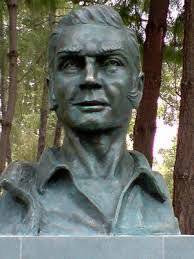 The command of the battalion took John Patrick Riley - a twenty-nine-year-old native of Ireland, who, shortly before the war, switched to the Mexican side from the ranks of the American army. John Riley was born in 1817 year in Clifden in County Galway. In the Irish version of his name was Sean O'Reilly. Apparently, he emigrated to North America in 1843, during the famine that affected many counties of Ireland. According to some reports, Riley initially settled in Canada and entered the service in the 66 Berkshire Regiment of the British Army, where he served in an artillery battery and received a sergeant rank. He then moved to the United States in Michigan, where he enlisted in the US Army. Before deserting and moving to the Mexican side, Riley served in the company "K" of the 5 Infantry Regiment of the US Army. According to some reports, in the US Army, Riley was promoted to a short time as a lieutenant. Turning to the side of the Mexican army, he, after the formation of the battalion, "temporarily" (that is, for the duration of the hostilities) was promoted to major of the Mexican army.
The command of the battalion took John Patrick Riley - a twenty-nine-year-old native of Ireland, who, shortly before the war, switched to the Mexican side from the ranks of the American army. John Riley was born in 1817 year in Clifden in County Galway. In the Irish version of his name was Sean O'Reilly. Apparently, he emigrated to North America in 1843, during the famine that affected many counties of Ireland. According to some reports, Riley initially settled in Canada and entered the service in the 66 Berkshire Regiment of the British Army, where he served in an artillery battery and received a sergeant rank. He then moved to the United States in Michigan, where he enlisted in the US Army. Before deserting and moving to the Mexican side, Riley served in the company "K" of the 5 Infantry Regiment of the US Army. According to some reports, in the US Army, Riley was promoted to a short time as a lieutenant. Turning to the side of the Mexican army, he, after the formation of the battalion, "temporarily" (that is, for the duration of the hostilities) was promoted to major of the Mexican army. Riley is considered the author of the idea of creating the St. Patrick's Battalion, as well as the developer of the battalion banner. By the way, about the banner. It was a panel of national Irish green. On different versions of the green flag were depicted: a harp crowned with the Mexican coat of arms and a scroll with the inscription “Free Mexican Republic”, under the harp the motto - Erin go Bragh! - “Ireland forever!”; a picture of "Virgin Airy" in the shape of a harp pillar and the signature "Ireland forever!"; silver cross and golden harp. Thus, the Battalion tried to combine Mexican and Irish symbols on the traditional green Irish flag.
Despite the fact that the battalion formed on the basis of an artillery battery was officially considered an infantry, in fact it was artillery because it was armed with horse artillery. By the way, in terms of horse artillery, he was actually the only Mexican alternative to the American equestrian artillery units. 23 February The 1847 Battalion clashed with the American army at the Battle of Buena Vista. With the help of the Mexican infantry, St. Patrick's soldiers attacked the American positions, destroying an artillery battery. Several artillery pieces were captured, subsequently used by the Mexican army. American General Zachary Taylor sent a dragoon squadron to capture the artillery positions of the battalion, but the dragoons did not cope with this task and returned wounded. Then the artillery duel of a battalion with several American batteries followed. As a result of the shelling, up to a third of the Irish soldiers were killed and wounded. For their valor, several Irish soldiers were awarded the Military Cross of the Mexican State.
Nevertheless, despite the courage and skill of the artillerymen, the battalion’s numerical losses led to its re-formation. By order of the President of Mexico, General Santa Anna, the St. Patrick's Battalion was renamed the Patrick Foreign Legion. In the unit recruited volunteers from many European countries. Colonel Francisco R. Moreno was appointed commander of the legion, John Riley became the commander of the first company, and Santiago O'Leary the commander of the second company. But as an infantry unit, Patrick's Legion continued to perform well in service and to prove himself in combat missions. Since each of the soldiers of the legion knew that if he were captured by the Americans, he would face the death penalty, the warriors of St. Patrick fought for life and death.
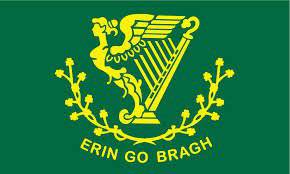 The combat training of soldiers and officers of the legion was significantly different from the Mexican army, since most of the legionnaires were veterans who served in the British army, the armies of other European states, the United States and had good military training and combat experience. Most of the Mexican soldiers were mobilized by peasants without military training. Therefore, the unit of St. Patrick remained, in fact, the only truly combat-ready in the Mexican army.
The combat training of soldiers and officers of the legion was significantly different from the Mexican army, since most of the legionnaires were veterans who served in the British army, the armies of other European states, the United States and had good military training and combat experience. Most of the Mexican soldiers were mobilized by peasants without military training. Therefore, the unit of St. Patrick remained, in fact, the only truly combat-ready in the Mexican army.Battle of Churubusco and the mass execution of prisoners
20 August 1847 began the battle of Churubusco, in which the soldiers of St. Patrick faced the task of defending the positions of the Mexican army from the American assault. The Irish managed to repel three storming of American soldiers. The lack of ammunition demoralized Mexican soldiers. At the same time, when Mexican officers attempted to raise a white flag and surrender the fortifications, they were shot by the Irish. St. Patrick's Legion would have stood to the last drop of blood if the American projectile had not fallen into the powder magazine of the Irish. There was nothing else left but to go on a bayonet attack on the Americans. The latter, using multiple numerical superiority, managed to crush the remnants of the famous division. 35 soldiers of St. Patrick were killed in a bayonet attack, 85 people were injured and captured (among them, the founder of the battalion, Major John Riley, and the commander of the 2 Company, Captain Santiago O'Leary). Another group of 85 soldiers managed to fight off and retreat, after which they were re-formed as part of the Mexican army. In the battle of Churubusco, the American troops lost 1052 man - in many ways, such serious losses were inflicted on them due to the military prowess of the soldiers of St. Patrick.
The joys of American commanders knew no bounds when 85 wounded Irishmen fell into their hands. In September, 1847, the forty-eight battalion fighters who had deserted from the American army during the fighting, were sentenced to be hanged. The rest of the Irish, deserted before the outbreak of hostilities, were sentenced to flogging, stigmatizing and life penal servitude (among them was John Riley). Historians claim that these sentences violated the current US regulations of those years governing the issue of punishment for desertion. Thus, it was understood that a deserter is subjected to one of three types of punishment - either flogging, or branding, or penal servitude. As for deserters who fled during the war, the death penalty by hanging was applied only to enemy civilian spies, the military should have been shot. As we see, all regulatory installations in this case were violated. On September 10, the St. Patrick's Battalion soldier 16 was hanged in San Angel, on the same day four more people were executed in a nearby village. Patrick Dalton, who was one of John Riley’s closest assistants and creators of the battalion, was strangled.
12 September 1847, the American troops stormed the fortress of Chapultepec. The siege was attended by an American compound of 6800 soldiers and officers, while the fortress was defended by Mexican troops outnumbered 3 — 2 was thousands of people, most of whom were non-shot cadets of the Mexican military academy. However, in the battle of Chapultepec, American troops lost 900 people killed. Major-General Winfield Scott, who commanded the American army, conceived in honor of raising the American flag over the fortress after the defeat of the Mexicans to hang the thirty St Patrick's soldiers sentenced to death. On 9.30 in the morning of September 13, they were hanged, including a fighter who had both legs amputated.
Suppressing the resistance of the last defenders of Mexico, US troops 14 September entered the capital of the country - Mexico City. General Santa Anna and the remnants of his troops fled, power passed into the hands of supporters of a peace treaty. 2 February A peace treaty was signed between Mexico and the United States of America in Guadalupe Hidalgo. The result of the defeat of Mexico in the war with the United States was the accession to the United States of Upper California, New Mexico, Lower Rio Grande, Texas. However, the victory in the war met a mixed reaction in American society itself. Army General Ulysses Grant, who fought as a young officer in the US-Mexican War under the command of General Scott, later wrote that the Civil War between the North and the South of the United States became the “divine punishment” of the American state for an unjust war of conquest: “the southern uprising was largely a germination of the Mexican of war. Nations, like people, are punished for their sins. We received our punishment in the most bloody and costly war of our time. ”
The territories seized from Mexico are currently in the US states of California, New Mexico, Arizona, Nevada, Utah, Colorado, Texas and part of Wyoming. It is significant that if in the 19th century the northern regions of Mexico were settled by English-speaking immigrants from North America, then today we can see a different picture - hundreds of thousands of Latin Americans come from Mexico and other countries of Central and South America across the American-Mexican border. Numerous Latin American diasporas still live in the border states and one of the US “headaches” is that Mexicans do not want to learn English and generally listen to the American way of life, preferring to preserve their national identity and hate “gringo.”
Thus, more than 160 years ago, in defending its economic and geopolitical interests, the United States of America actively used the rhetoric of “freedom fighters”. By posing as the protector of the people of Texas and California, suffering from the Mexican military dictatorship, the American government successfully accomplished the act of annexing a vast territory that previously belonged to Mexico and attached significant areas of land to the United States. The “right of the strong” always determined both the foreign and domestic policies of the United States of America, while “democracy”, “humanism”, “liberalism” serve only as signs designed to mask the true nature of this state with distinct predatory instincts.
The fate of the surviving soldiers and officers of the St. Patrick's Battalion is virtually unknown to modern historians. John Riley, who escaped the death sentence because he had deserted before the outbreak of hostilities, was branded with the letter “D” - “deserter”, spent some time in custody, and after the war he was released. After returning to Mexico, he grew long hair to hide his scarred face, and continued to serve in the Mexican army as a major. In 1850, at the age of thirty-three, Riley was dismissed because of his illness with yellow fever. He soon died.
Irish-Mexican memory
September 12 is celebrated in Mexico and Ireland as a Memorial Day for Irish soldiers who fought on the side of the Mexican state. In Mexico, in San Angel, one of the districts of Mexico City, a memorable procession takes place on this day. The standard-bearers of the elite division of the Mexican army under the drumbeat endure the national flags of Mexico and Ireland. At the foot of the pedestal, erected in honor of the soldiers and officers of the Battalion of St. Patrick lay wreaths.
The names and surnames of Irish soldiers and officers who died in battles with American troops are immortalized on a memorial plaque in a city park, installed in 1959 year. On the board, in addition to the seventy-one names, the inscription reads “In memory of the Irish soldiers of the heroic Battalion of St. Patrick, who gave their lives for Mexico during the treacherous North American invasion of 1847.” By and large, the soldiers and officers of the Irish battalion in Mexico are commemorated twice - September 12 - on the anniversary of the execution - and March March 17 - on St. Patrick's Day.
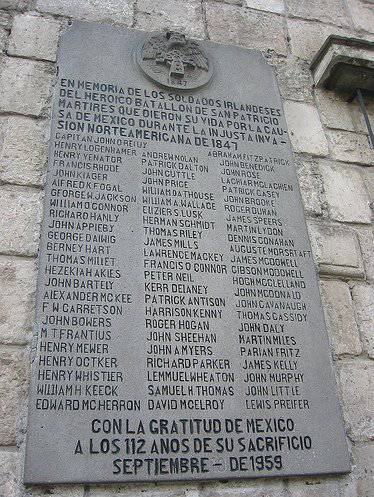 Streets, schools, churches in Mexico are named after the battalion, including the St. Patrick's battalion street in front of the Irish school in Monterrey, the street of the Irish martyrs in front of the Santa Maria de Churubusco monastery in Mexico City, the city of San Patricio. Also named after the battalion is the only bagpipe group in the country located in the former monastery of Churubusko, where today the museum of foreign intervention is located. In 1997, in commemoration of the 150 anniversary of the execution of Irish soldiers, Mexico and Ireland issued a joint commemorative series of stamps.
Streets, schools, churches in Mexico are named after the battalion, including the St. Patrick's battalion street in front of the Irish school in Monterrey, the street of the Irish martyrs in front of the Santa Maria de Churubusco monastery in Mexico City, the city of San Patricio. Also named after the battalion is the only bagpipe group in the country located in the former monastery of Churubusko, where today the museum of foreign intervention is located. In 1997, in commemoration of the 150 anniversary of the execution of Irish soldiers, Mexico and Ireland issued a joint commemorative series of stamps.In Ireland, in Clifden, the birthplace of John Riley, a bronze sculpture was set up in honor of the St. Patrick's Battalion and its legendary “founding father”. This sculpture is a gift from the Mexican government to the people of Ireland for their contribution to the protection of the territorial integrity and interests of Mexico. In honor of John Riley, in Clifden, in his homeland, every September 12 is raising a Mexican flag.
Many generations of Americans perceive the soldiers and officers of the battalion as deserters and traitors, purely negative characters worthy of comprehensive censure. At the same time, the Americans refer to the negative attitude towards deserters generally accepted in any state, not realizing that the Irish soldiers deserted not because of their own cowardice and after desertion from the American army did not engage in looting or criminal gangsterism, but heroically proved themselves to defend the Mexican land. The ideals of freedom and independence, the proximity of Mexicans as co-religionists - Catholics turned out to be more attractive values for Irish soldiers than the American monetary reward or status of an American citizen. In Mexico and Ireland, the soldiers of St. Patrick are not considered to be any deserters and traitors, but they see them as heroes who came to the aid of co-religionists in the days of difficult trials.
Information